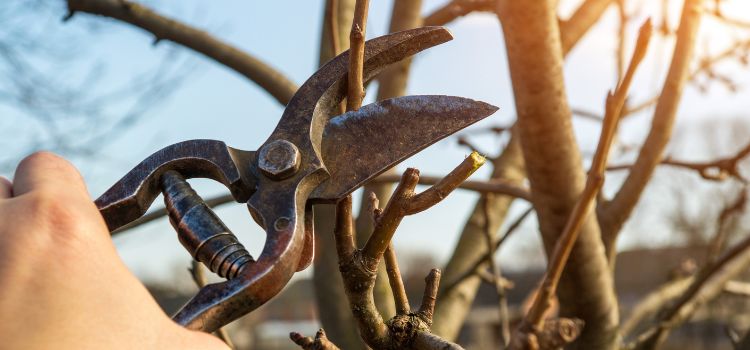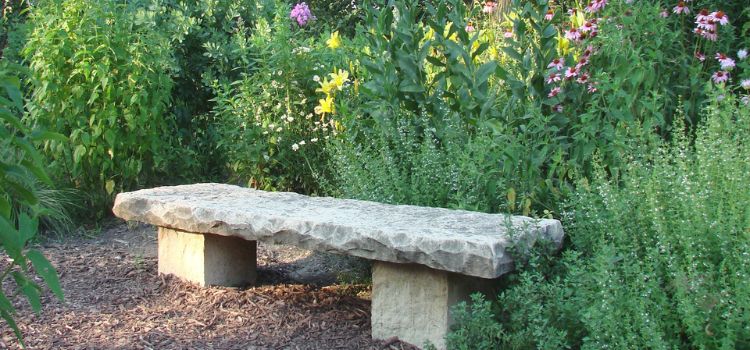Unlocking Year-Round Harvests: How to Grow Fruit Trees in Arizona
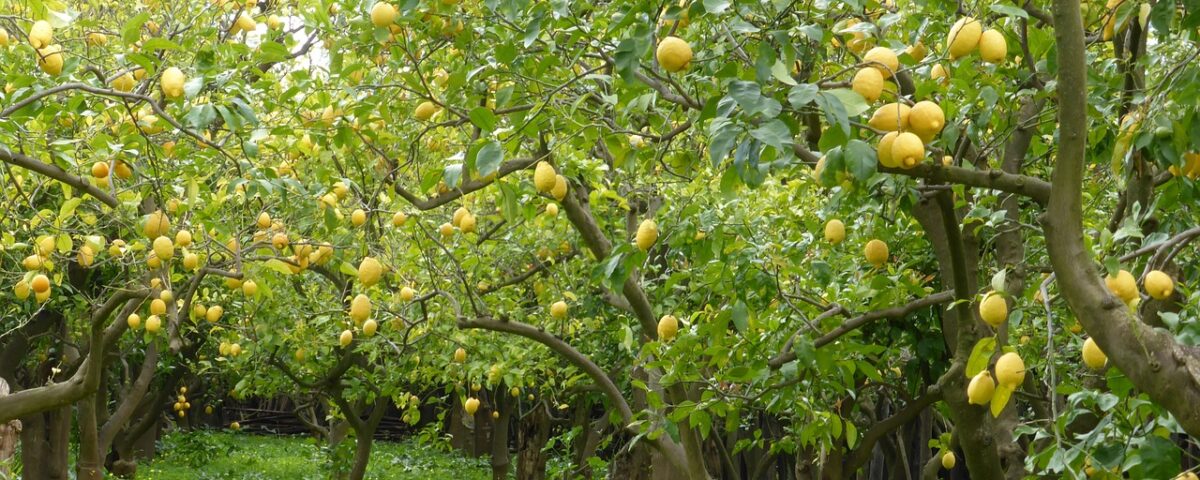
Are you dreaming of a garden full of lush fruit trees, even in Arizona or the Desert Southwest’s challenging climate? In this blog post, we’ll dive into how to grow fruit trees in Arizona and give you a sneak peek into our September 28 workshop. Get ready to unlock year-round harvests with these essential tips for thriving fruit trees in Arizona’s unique climate.
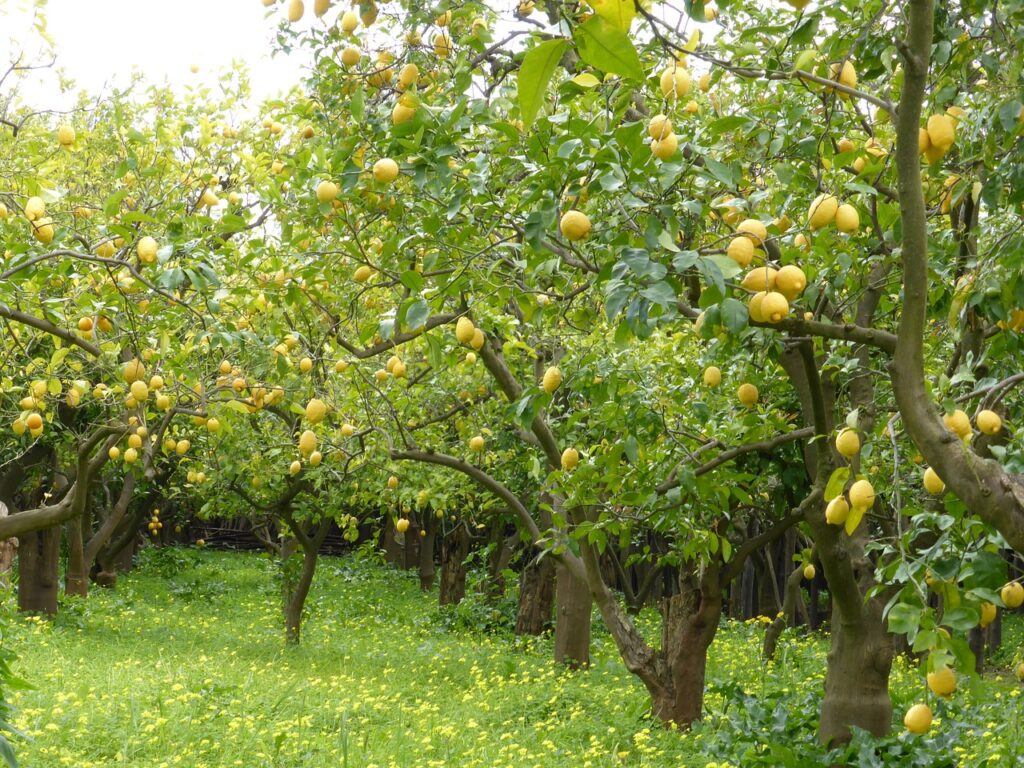
Understanding Arizona’s Climate so You Can Grow Fruit Trees in Arizona
Arizona’s climate poses specific challenges for fruit tree cultivation. The desert heat, low humidity, and varying soil conditions can be tough on plants. To thrive, fruit trees must be adapted to these conditions. Here’s a breakdown of what you’re dealing with:
- Temperature Extremes: Arizona experiences extreme temperatures, from scorching summers to chilly winters. This temperature fluctuation can stress plants if they aren’t properly cared for.
- Low Humidity: The dry air can lead to increased water needs and affect plant health.
- Soil Conditions: Many areas have sandy or clay-heavy soils that may need amendments to support healthy tree growth.
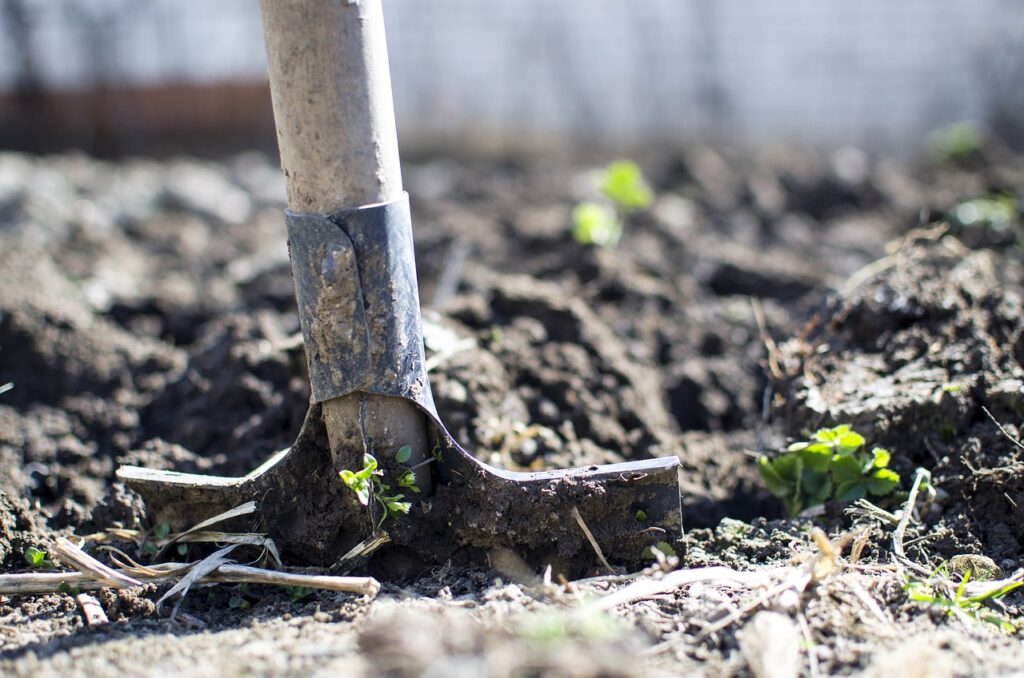
Grow Fruit Trees in Arizona: Choosing the Right Trees
If you want to grow fruit trees in Arizona, then selecting the appropriate fruit trees is crucial for success. Not all fruit trees will thrive in Arizona’s climate, so choose varieties suited to these conditions.
Fruit Trees Best Suited to Grow in Arizona
- Citrus Trees:
- Lemons: Varieties like ‘Improved Meyer’ are perfect for Arizona’s climate.
- Oranges: Navel oranges and Valencia oranges are good choices.
- Grapefruits: Ruby Red and Marsh varieties thrive in Arizona.
- Limes: Key limes and Persian limes perform well.
- Tangerines: ‘Dancy’ and ‘Honey’ tangerines grow well in desert climates.
- Mandarins: ‘Owari’ Satsuma mandarins are excellent for Arizona.
- Kumquats: ‘Nagami’ and ‘Meiwa’ kumquats are hardy options for citrus lovers.
- Pomegranates:
- Drought-tolerant and heat-resistant, varieties like ‘Wonderful’ and ‘Angel Red’ are popular choices.
- Figs:
- Figs like ‘Black Mission’ and ‘Kadota’ perform well in Arizona’s desert heat.
- Olives:
- Hardy, drought-resistant trees such as ‘Arbequina’ and ‘Manzanilla’ thrive in the desert.
- Stone Fruits:
- Peaches: ‘Desert Gold’ and ‘Flame Prince’ are bred for heat tolerance.
- Plums: ‘Santa Rosa’ and ‘Methley’ work well in Arizona’s climate.
- Apricots: Varieties like ‘Tilton’ and ‘Katy’ handle the heat effectively.
- Apples:
- Low-chill varieties like ‘Anna’ and ‘Dorsett Golden’ are well-suited to Arizona’s conditions.
- Pears:
- Varieties like ‘Kieffer’ and ‘Orient’ tolerate Arizona’s dry heat.
- Jujube:
- Heat and drought-tolerant varieties like ‘Li’ and ‘Lang’ are ideal for the desert environment.
- Guava:
- Tropical Guava: Varieties like ‘Mexican Cream’ and ‘Tropic Pink’ perform well in Arizona’s heat, as long as they receive adequate watering and protection from cold.
- Dates:
- Medjool and Barhi date palms thrive in the hot, dry desert climate and are a great addition to an Arizona fruit tree garden.
- Cherimoya:
- Although cherimoya prefers more tropical climates, with careful watering, shading, and frost protection, varieties like ‘Fino de Jete’ can survive Arizona’s climate.
- Dragon Fruit:
- A heat-loving cactus, Dragon Fruit (Hylocereus) varieties like ‘Yellow Dragon’ and ‘Vietnamese White’ thrive in Arizona’s arid conditions and produce exotic, delicious fruits.
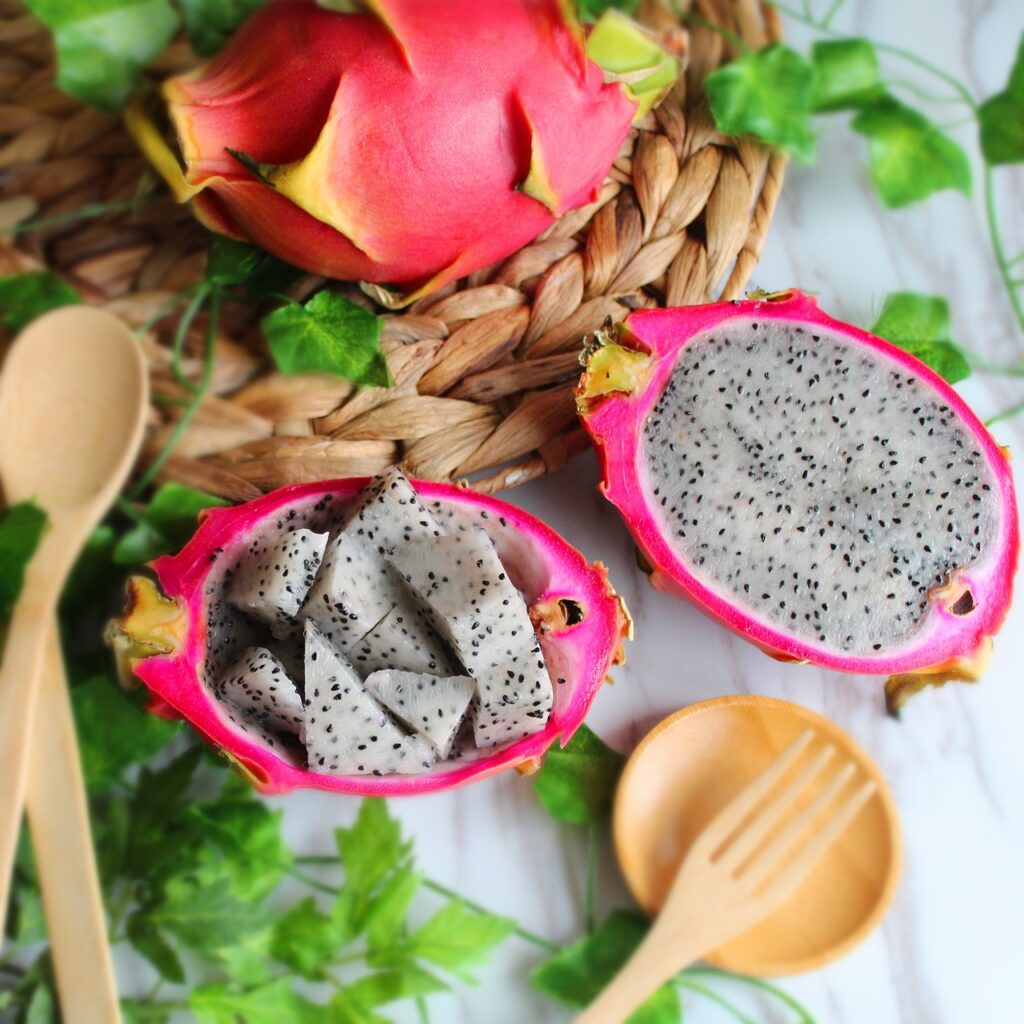
Tips for How to Grow Fruit Trees in Arizona
1. Selecting and Planting Fruit Trees
- Choose Heat-Tolerant Varieties: Look for trees specifically bred for hot climates. Heat-tolerant varieties will better withstand Arizona’s high temperatures.
- Opt for Drought-Resistant Varieties: In addition to heat tolerance, choose trees that are drought-resistant to cope with the arid conditions.
- Planting Time: The best time to plant is in the fall. This timing allows roots to establish before the intense summer heat arrives. If you miss the fall window, early spring is the next best option.
2. Soil Preparation and Improvement
- Enhance Soil Quality: Arizona soil, particularly caliche-rich soil, often needs improvement. Add organic matter like compost to improve soil structure, drainage, and fertility when roots might get locked in caliche soil. Otherwise, plant in native soil.
- Soil Testing: Test your soil’s pH and nutrient levels. Most fruit trees prefer a pH between 6.0 and 7.0. Amend the soil as needed based on the test results.
3. Effective Watering Techniques
- Deep Watering: Fruit trees need deep watering to develop strong roots. Water slowly and deeply to encourage roots to grow deep into the soil. Aim for a watering depth of at least 12 inches.
- Drip Irrigation Systems: Install a drip irrigation system to provide consistent moisture directly to the roots. This system minimizes water waste and ensures even hydration. Consult the WaterUseItWisely Guide for good advice on irrigation concerns.
4. Providing Shade and Protection
- Shade Structures: Use shade cloth or structures to protect your trees from the intense midday sun. This can prevent sunburn and stress on the trees, particularly young trees.
- Mulching: Apply a layer of mulch around the base of the tree. Mulch helps retain soil moisture, regulate temperature, and suppress weeds. Use organic mulches like wood chips or straw.
5. Fertilization Practices
- Balanced Fertilizers: Use a balanced fertilizer that provides equal parts nitrogen, phosphorus, and potassium. This supports overall tree health and promotes fruit production.
- Fertilization Schedule: Fertilize in early spring and again in late summer. Avoid fertilizing late in the season, as it can lead to vulnerable, frost-sensitive growth.
6. Pruning Techniques
- Winter Pruning: Prune trees during their dormant period in winter. Remove dead or diseased branches and shape the tree to encourage healthy growth in the spring.
- Summer Pruning: Lightly prune during the growing season to manage tree size, remove any excess growth, and improve air circulation around the tree.
7. Pest and Disease Management
- Regular Inspections: Inspect your trees frequently for signs of pests and diseases. Common issues include aphids, scale insects, and fungal infections.
- Integrated Pest Management: Use a combination of cultural, biological, and mechanical controls to manage pests. For instance, introducing beneficial insects can help control aphid populations.
8. Citrus Tree Care
Citrus trees require specific care to thrive in Arizona:
- Sunlight: Citrus trees need full sun to produce the best fruit. Ensure they get at least 6-8 hours of sunlight daily.
- Watering: Citrus trees have shallow root systems. Water them deeply but more frequently than other fruit trees, especially during summer hot spells.
- Fertilization: Citrus trees benefit from specialized citrus fertilizers that provide micronutrients essential for fruit production, like magnesium and iron.
- Disease Prevention: Watch for citrus greening disease and citrus leaf miner. Maintain tree health with proper care and avoid overhead watering to reduce disease risk.
- Heat and Cold Care: Citrus benefits from shading on the central tree trunk to prevent sunscald. This condition can happen during cold winter night and during extreme sun exposure. If your branches are limbed up, exposing the trunk, then additional shade protection is needed. Painting the central tree trunk (white or natural color) prevents cracking and splitting of the bark, which allows insects, fungus, and disease to get in.

Advanced Techniques for How to Grow Fruit Trees in Arizona
To further ensure your fruit trees flourish in Arizona’s climate, consider implementing some advanced gardening techniques. These strategies can enhance tree health and boost fruit production. Want to learn even more? Join Justin Rohner from Agriscaping for our DIY Mastery program to help you better learn about microclimates and management for your entire desert Southwest or southern garden. LEARN ABOUT THE PROGRAM HERE.
1. Creating Microclimates
- Use Walls and Fences: Planting fruit trees near walls or fences can create a microclimate that shields them from harsh winds and reflects additional sunlight. This can help regulate temperature and protect against frost.
- Consider Windbreaks: Install windbreaks such as shrubs or trees to shield young fruit trees from strong desert winds that can cause physical damage and increase moisture loss.
2. Using Shade Cloths Effectively
- Shade Cloth Types: Use shade cloth with varying percentages of shade depending on the tree’s needs. For example, a 30% shade cloth can help protect younger trees, while a 50% shade cloth may be necessary for more mature trees during peak summer.
- Proper Placement: Ensure that shade cloths are placed high enough above the trees to avoid restricting their natural growth. Adjust the height as the tree grows to maintain effective shading.
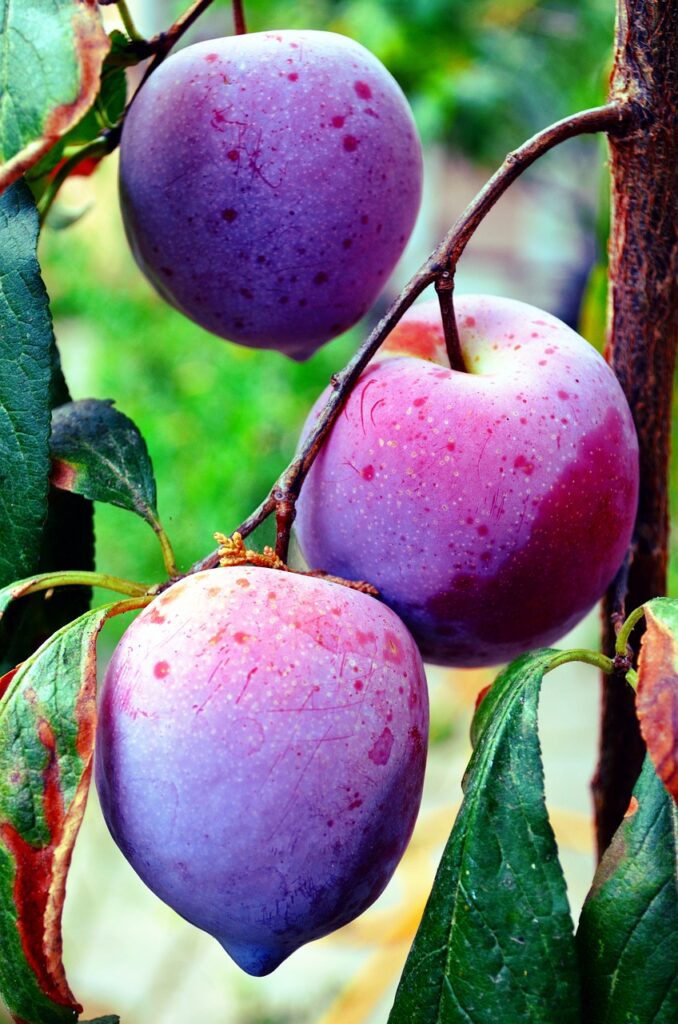
3. Implementing Soil Moisture Management
- Soil Moisture Sensors: Install soil moisture sensors to monitor soil moisture levels accurately. This helps in avoiding over-watering or under-watering, which can stress trees.
- Watering Schedules: Develop a watering schedule based on the moisture needs of each tree. Adjust the frequency and amount of water according to seasonal changes and weather conditions.
4. Fertilizing with Precision
- Soil Amendments: Regularly add soil amendments like compost or aged manure to improve soil fertility and structure. These organic materials provide essential nutrients and enhance soil water retention.
- Foliar Feeding: Use foliar feeding techniques to address specific nutrient deficiencies quickly. Spray diluted liquid fertilizers directly onto the leaves for faster absorption.
5. Enhancing Pollination
- Plant Companion Plants: Introduce companion plants that attract pollinators, such as flowering herbs and flowers. This encourages bees and butterflies to visit your fruit trees and improve fruit set.
- Hand Pollination: For trees with low pollination rates or in cases where natural pollinators are scarce, consider hand-pollinating flowers using a small brush to transfer pollen.
6. Managing Tree Growth and Development
- Training and Support: Use tree training techniques like espaliering or staking to guide tree growth and provide support. This can help manage tree size and improve fruit production in confined spaces.
- Thinning Fruit: Thin out excess fruit to reduce the load on branches. This practice allows remaining fruit to develop larger and healthier, improving overall fruit quality.
7. Winter Care and Protection
- Protecting Roots: In colder months, protect tree roots from freezing temperatures by applying mulch around the base. This insulation helps keep soil temperatures stable.
- Frost Protection: Use frost covers or row covers to shield fruit trees from sudden cold snaps and frost damage during winter.
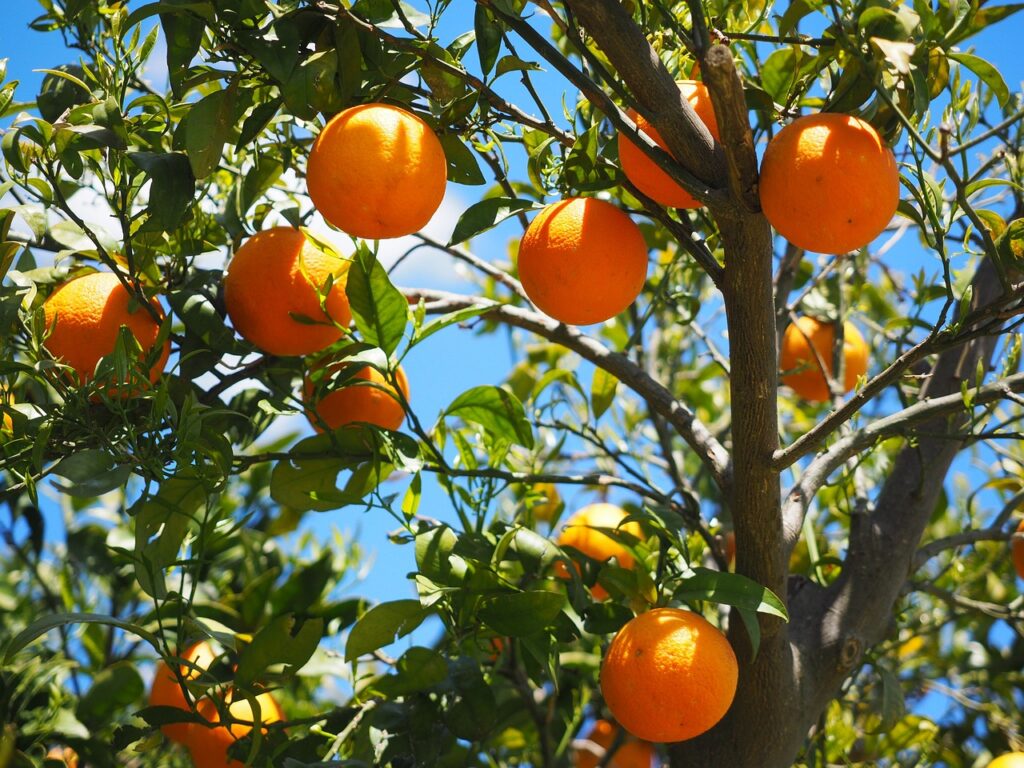
Troubleshooting Common Issues with How to Grow Fruit Trees in Arizona
Even with the best care, you might encounter some issues. Here’s how to troubleshoot common problems:
1. Leaf Drop and Yellowing
- Possible Causes: Leaf drop or yellowing can be caused by over-watering, nutrient deficiencies, or pest infestations.
- Solutions: Adjust watering practices, apply appropriate fertilizers, and inspect for pests. Correct any issues promptly to prevent further damage.
2. Poor Fruit Set
- Possible Causes: Poor fruit set might be due to insufficient pollination, nutrient imbalances, or environmental stress.
- Solutions: Encourage pollinators, ensure proper fertilization, and provide consistent care to reduce stress on the trees.
3. Pest Infestations
- Common Pests: Look out for pests like aphids, spider mites, and scale insects. They can damage leaves, stems, and fruit.
- Management: Use organic pest control methods such as insecticidal soap, neem oil, or introducing beneficial insects that prey on pests.
4. Disease Issues
- Common Diseases: Fungal diseases such as powdery mildew or rust can affect fruit trees.
- Management: Improve air circulation by spacing trees appropriately and avoid overhead watering. Use fungicides as needed and follow recommended treatment guidelines.
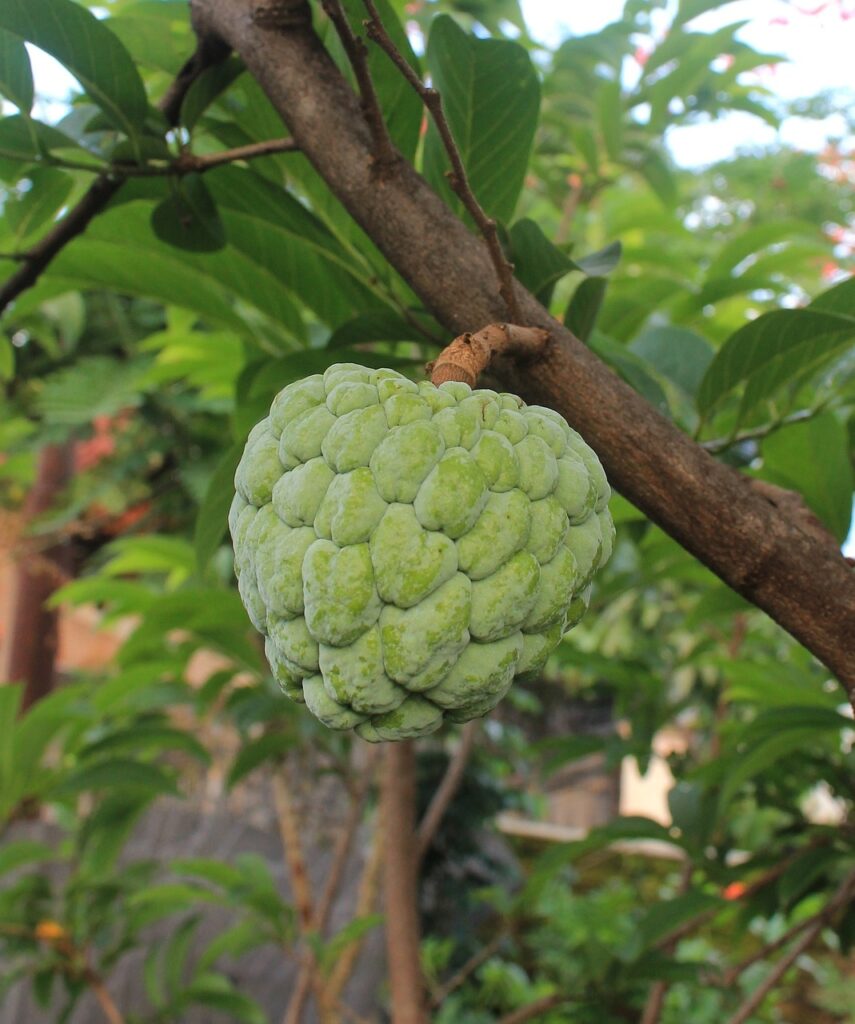
Grow Fruit Trees in Arizona: Expanding Your Fruit Tree Garden
Once you’ve mastered the basics of growing fruit trees in Arizona, consider expanding your garden with additional tree varieties or experimenting with new techniques:
1. Explore Rare Varieties
- Exotic Fruits: Look into growing exotic fruit varieties that may also thrive in Arizona, such as cherimoya or dragon fruit, which can offer unique flavors and diversity to your garden.
- Heritage Varieties: Try heritage or heirloom fruit tree varieties that may offer better disease resistance or different flavors suited to your local conditions.
2. Integrate Fruit Trees with Other Garden Elements
- Edible Landscaping: Incorporate fruit trees into your landscape design for both aesthetic and functional purposes. Combine them with ornamental plants to create a beautiful and productive garden.
- Companion Planting: Use companion planting strategies to enhance growth and reduce pest issues. For example, planting herbs like basil or mint around fruit trees can help repel pests.
You can Grow Fruit Trees in Arizona!
Successfully growing fruit trees in Arizona’s challenging climate is a rewarding endeavor. By choosing suitable varieties, preparing your soil, applying effective watering and fertilization techniques, and managing pests and diseases, you can enjoy a thriving fruit garden. Advanced techniques, troubleshooting, and continuous learning will further enhance your success and expand your gardening possibilities.
With these detailed strategies and tips, you’re well-equipped to create a lush, productive fruit tree garden that stands up to Arizona’s unique climate. Embrace the challenges and rewards of desert gardening, and enjoy the fruits of your labor all year long. Happy gardening!
Read Our Latest Posts…
- Start the New Year with a Thriving Edible LandscapeExpert tips for desert gardening, from plant zoning and efficient irrigation to soil care and agriscaping for a sustainable landscape.
- Understanding Freeze PruningExpert tips for desert gardening, from plant zoning and efficient irrigation to soil care and agriscaping for a sustainable landscape.
- A Garden-Fresh Christmas: Agriscaping Tips for a Festive and Sustainable HolidayExpert tips for desert gardening, from plant zoning and efficient irrigation to soil care and agriscaping for a sustainable landscape.
- 7 Garden Design Themes for Your Elegant Edible LandscapeExpert tips for desert gardening, from plant zoning and efficient irrigation to soil care and agriscaping for a sustainable landscape.
- Subterranean Trampoline Gardens: A Hidden Oasis for Growing and PlayingExpert tips for desert gardening, from plant zoning and efficient irrigation to soil care and agriscaping for a sustainable landscape.



